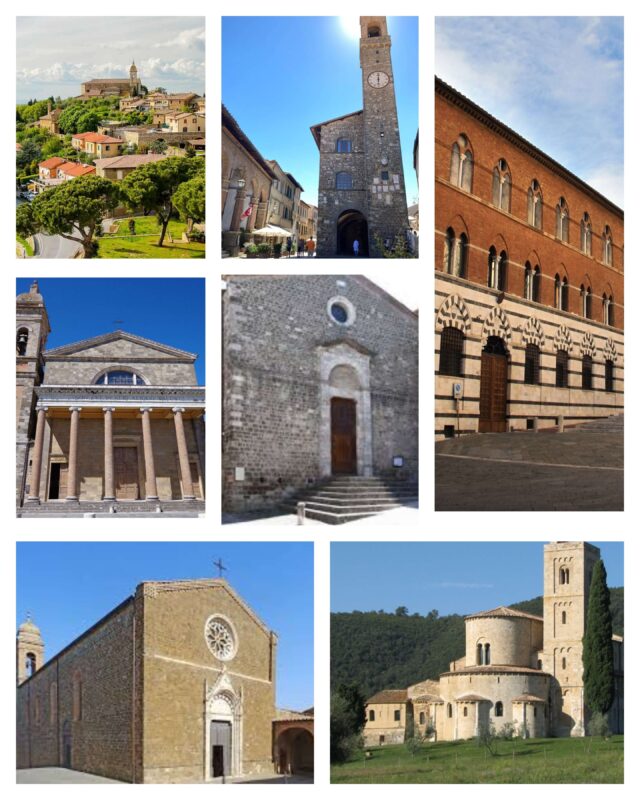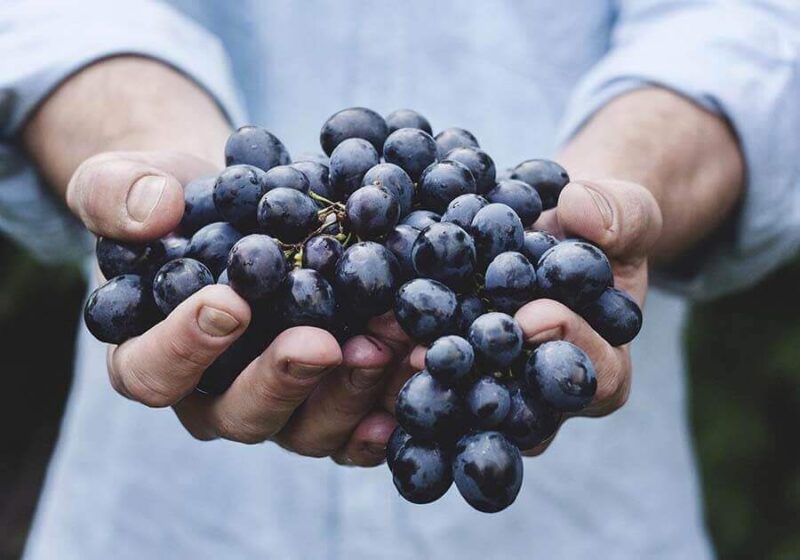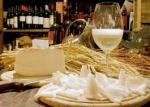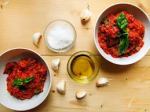Montalcino e il Brunello, l’oro rosso della Val d’Orcia
Patrimonio dell’Unesco dal 2004, Montalcino è un affascinante borgo toscano. Esso è di origine etrusca, e conta appena sei mila abitanti. Si trova a sud di Siena, che in passato la sottrae dopo secoli al controllo di Firenze.
Per questa vittoria celebrata nel 1361 si erige a Montalcino una massiccia fortezza , che è a pianta pentagonale fatta . Essa è stat fatta dagli architetti toscani Mino Foresi e Domenico di Feo. Da questo capolavoro con torri angolari , sede del celebre ‘Jazz & Wine Festival’ , si scorgono in lontananza il Monte Amiata e le Crete Senesi.

6 cose da vedere a Montalcino!
Montalcino è un paesino medievale incantato, che tutto l’anno ammalia migliaia di visitatori con i suoi negozi e ristorantini alla moda. I suoi vicoli stretti e i suoi quattro chilometri di mura possenti con tredici torrioni e sei porte. Montalcino racchiude inestimabili tesori quali:
- ‘Palazzo dei Priori’: Collocato in Piazza del Popolo ( XIII-XIV secolo) , sul cui lato orientale si ammira una straordinaria loggia a cinque archi di fattura ed epoche diverse, è adornato con gli stemmi araldici dei vari podestà di Montalcino. Ci sono anche un’alta torre merlata e un portico con volte ribassate . In mezzo ci sta una statua cinquecentesca di Cosimo I dei Medici;
- ‘Palazzo Vescovile’: Questo era inizialmente la residenza per il vescovo della diocesi per volere di papa Pio III Piccolomini . Poi ci trasferirono i musei di Montalcino, che negli anni Novanta furono poi spostati nel Seminario di Sant’Agostino;
- ‘Duomo’: Sorgeva qui una pieve romanica, che Pio II convertì nell’odierno Duomo nel 1462. Dedicato a San Salvatore , esso è in stile neoclassico. Il Duomo è un esempio della magnificenza di Montalcino, e custodisce al suo interno dipinti di alto valore di Francesco Vanni , della scuola senese del XVI secolo, e di Francesco Nasini (1647) ;
- ‘Chiesa di Sant’Egidio’: Edificata nel 1325, si fa notare per la semplicità della facciata romanica in pietra e il delizioso campanile a vela. La chiesa presenta una sola navata, sormontata da un tetto a travi. Sull’altare maggiore si staglia un tabernacolo evocativo in legno istoriato sul ‘Cristo risorto e Santi’ di Alessandro Casolani;
- ‘Chiesa romanica di ‘Sant’Agostino’ : Risalente al Trecento è adornata con degli affreschi di scuola senese raffiguranti le scene della ‘Passione di Cristo’ e ‘La vita di Sant’Antonio Abate’. Altri descrivono le vicissitudini di ‘Sant’Agostino, degli Evangelisti e dei Dottori della Chiesa’ attribuiti a Bartolo di Fredi. La chiesa ospita anche il ‘Museo Civico e Diocesano d’Arte Sacra di Montalcino’ , e il più recente ‘Tempio del Brunello’, un museo dedicato all’ uva celebre del paese;
- ‘Abbazia di Sant’Antimo’ :Si tratta di un complesso monastico del XIII° secolo presso Castelnuovo dell’Abate, non molto distante da Montalcino, notevole monumento romanico della Toscana meridionale.
Montalcino e il Brunello, una Bordeaux tutta Italiana. Un modello per uscire dalla crisi della pandemia!
Montalcino deve la sua gloria ai suoi stupefacenti paesaggi collinari, puntellati da girasoli e papaveri. Ma anche all’essere stata tappa per i pellegrini della via Francigena. Questa da Roma conduceva fino a Canterbury, e ciò rese la posizione geografica di Montalcino relativamente isolata, fino a farne un crocevia di mercanti, papi e imperatori.
Grazie a questo e allo spirito imprenditoriale del suo popolo, la piccola cittadina sviluppò un’economia mercantile molto fiorente. Disgraziatamente però Montalcino precipitò in fondo al baratro nella seconda metà del Novecento.
Mai arrendersi!
Le cause furono alcuni episodi funesti del 1960. Tra esse:
- l’ apertura dell’Autostrada del Sole (che da Milano conduceva a Napoli);
- il repentino crollo dei traffici stradali sulla vicina Cassia;
- l’abolizione della mezzadria .
Un elenco di fattori negativi, che misero Montalcino a dura prova . Con la conseguente sparizione delle sue attività artigianali ed emigrazione dei suoi cittadini. Una catastrofe di circa dieci anni che si superò nel giro di mezzo secolo.
Per intervento della comunità agricola ilcinese, che si risollevò puntando tutto sul Brunello! Mossa per nulla azzardata che consacrò Montalcino a tempio del vino rosso. Un sapere antico ereditato già dagli etruschi, come testimoniato da vari reperti archeologici ritrovatesi nelle vicinanze.
Come nasce il Brunello?
Ma cosa è esattamente il Brunello? Il Brunello è una variante genetica del Sangiovese, che il farmacista Clemente Biondi Santi studiò approfonditamente alla fine dell’Ottocento .
Questo fece fare a Montalcino il vero salto di qualità. Il nobile toscano intuì le potenzialità del Brunello ( chiamato a questa maniera per via del colore piuttosto bruno degli acini), vinificandolo in purezza e ottenendo un vino rosso impareggiabile.
La vendemmia del 1865 del Brunello ottené addirittura una medaglia d’argento dal ‘Comizio Agrario di Montepulciano’, e poi fu premiato a Parigi e Bordeaux, oscurando persino i blasonati rossi francesi.
Successivamente il nipote Ferruccio Biondi Santi impiantò a Montalcino il primo vitigno di Brunello , che volò in picchiata fino alla proclamazione della DOC nel 1966 , e del suo Consorzio e della DOCG nel 1980 . Da allora in poi le voci sulla gloria del Brunello girarono in fretta, e dei ricchi investitori americani scommisero e investirono su Montalcino , eleggendola a patria enoica italiana.

Brunello, il signor vino! Mi presento!
Il Brunello è sempre stato un rosso di nicchia. Non a caso si aggiudicò riconoscimenti importanti dal prestigioso ‘Wine Spectator’ come:
- migliore vino rosso nel 1999 ;
- come primo nella classifica mondiale nel 2006.
Onore al merito, se consideriamo che Montalcino parò il colpo di altre tre grosse meteore. In ordine temporale esse furono:
- il collasso finanziaria del 2008;
- il rincaro di prezzi del Brunello del 50% nel 1997 a causa di politiche sbagliate (perché intanto la domanda si abbassava!);
- lo scandalo dell’aggiunta di altre uve contrariamente al disciplinare..
Il ‘Rosso di Montalcino’, il fratello del Brunello!
La ripresa fu comunque veloce. Cioè accadde , nel senso che non fu progettata a tavolino. Infatti il sistema era già solido di suo . E nonostante le paure e le difficoltà, gli icinesi si tennero compatti e agirono. I commercianti applicarono qualche buona strategia:
- Non riabbassarono le cifre di vendita del Brunello. Piuttosto lo esportarono nelle grosse distribuzioni del Centro Europa;
- Fece la sua comparsa il ‘Rosso di Montalcino’, in sostanza la prima annata del Brunello , che è seducente abbastanza da potere essere messa in circolazione.
Tutto questo permise un respiro all’economia di Montalcino . E da questa storia si evince che il vino è, è stato, e sarà sempre la fortuna e la speranza di Montalcino.
Cosa fa del Brunello un vino unico? Il suo terroir
Il Brunello è un vitigno figlio del Sangiovese, che cresce solo a Montalcino , per delle peculiarità pedoclimatiche particolarissime. Montalcino sorge su una collina dell’altezza massima di 600 m, che le garantisce un’ottima esposizione solare e una perfetta escursione termica, ottimo per la prevenzione dell’umidità.
Il clima Montalcino è mediterraneo, mitigato d’inverno per la presenza del mare (a poco più di 40 km), e ben ventilato per la protezione offerta dalle montagne e dalle tre valli dell’Orcia, dell’Asso e dell’Ombrone .
Ed è proprio questo terroir irritrovabile che dona rarità al nostro Brunello, la cui zona di produzione coincide con lo stesso comune di Montalcino per un totale di circa 4000 ettari vitati. Soltanto il 15 % dell’intero comprensorio di Montalcino è destinato alle uve, per il resto è costituito da boschi di querce, faggi, e lecci. Un ambiente bucolico di prati estesi che si alterna a filari verdi, allevati a cordone speronato e guyot e ad alta densità di impianto per ettaro (3 000 ceppi/ha) per garantire qualità nella resa.
Brunello, se non ci fosse bisognerebbe piantarlo!
Il Brunello è l’espressione più autentica della Toscana, che è conosciuto anche come ‘grosso’, cioè dalla buccia spessa. Quest’ultima è una caratteristica che causa macerazione più duratura. Questa inoltre richiede almeno trenta giorni per estrarre tannini, colore e polifenoli!
Il massimo dell’esaltazione del Brunello è dato dal suo riposo per almeno cinque anni (che sono sei per la versione riserva) nelle botti di rovere, dal momento della vendemmia alla sua immessa nel mercato. Il Brunello è un’opera d’arte dal rosso rubino intenso tendente al granato se invecchiato: una complessità di armonie, che sa di frutti rossi, vaniglia, legno e sottobosco.
Brunello, il re dei vini
Il Brunello è un vino nobile, tannico, strutturato, caldo, armonico e persistente. Un rosso che è compagno ideale dei grandi piatti della cuisine toscana, tra selvaggina e tartufi. Si percepisce la grafite nel Brunello , la stessa che rimane nei suoli vulcanici di Montalcino , che abbondano anche in calcare, sabbia, argilla, galestro e alberese, regalando mineralità al nettare toscano. Elementi questi che si trovano sparpagliati in tutti i vigneti di Montalcino , benché in percentuali diverse, per l’intesa attività tettonica durante le diverse ere geologiche.
Queste ultime lasciarono a Montalcino ambienti podologici variegati , ed è per questo motivo che un Brunello non è mai del tutto uguale a un altro! Montalcino è un modello da copiare per un prototipo di sviluppo economico, che confida nella valorizzazione delle proprie risorse territoriali, che in teoria dovrebbe essere il destino di molte altre aree dell’Italia dal Nord al Sud.
Montalcino insegna!
Il passato di Montalcino ci insegna che si può uscire dalla tempesta con le ossa rotte, ma più forti e migliori di prima. E questo racconto è un augurio per sconfiggere del tutto il Covid , e per riprenderci nell’immediato dalle tragiche conseguenze di questa pandemia.
L’impegno dei produttori di Montalcino e delle varie associazioni di categoria, hanno sicuramente funzionato per ottimizzare e preservare l’eccellenza dei beni naturali di Montalcino. Attenzioni costanti che lo stesso Roberto pratica da quando ci abita.
If you like my post, please subscribe to the socials of www.WeLoveitaly.eu :












